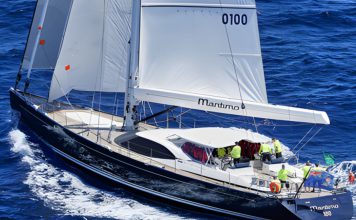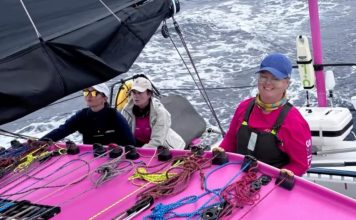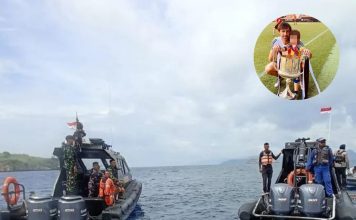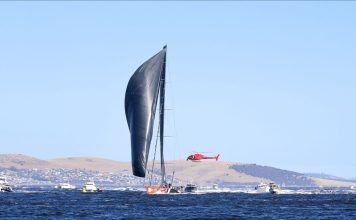It’s not often I get sent a catamaran to review in a bag.
The bag is unremarkable with sturdy handles, solid stitching and a nice mesh detailing. The cat that lies neatly folded in the bag, on the other hand, is truly remarkable. It is a small boat that is already revolutionising the international inflatable yacht tender market with its innovative design and attention to detail.
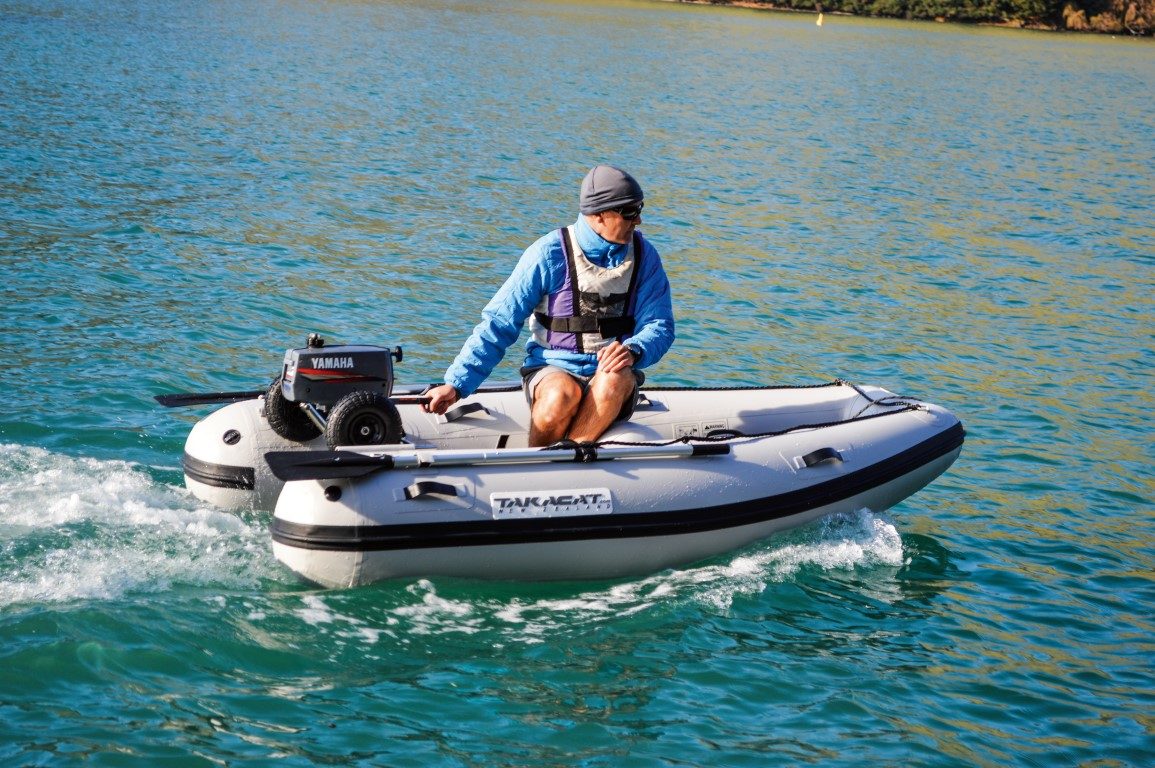
The inflatable Takacat 260 Sport is one of the more popular models in the extensive Takacat range. Its popularity is largely due to the fact that it’s the perfect size for an inflatable tender which integrates the easy, lightweight portability of a roll-up inflatable with the tracking, speed and stability of a RIB.
The Takacat range is the brainchild of Auckland entrepreneur and engineer Greg Sowden who initially experimented with prototype designs for an inflatable catamaran in his backyard. Early designs were similar to the mighty Thundercats used in surf rescue.
While exciting to helm and a hell of a lot of fun they were considered too heavy and overbuilt to compete in the yacht tender market. After nine years of research and development the Takacat range is now refined down to the Lite (3m-3.4m) and the Sport (2.4m-3.8m) all-capable tenders and off-the-beach vessels.
Assembly
Getting the cat out of the bag is easy. There are no solid floors or complex components to knot together, and there’s a handy YouTube clip to show you how to do it.
The trick to it all is to set up the stainless steel transom bars before you start inflating. The top transom bar slides aft and the floor bar slides forward so the torque from the motor naturally holds them in position.
A little silicon spray or soapy water makes sliding the bars into their slots easier. Once the bars are in place it is a simple matter of inflating the two side chambers with either a double-action foot pump (supplied) or an electric pump if you’re feeling lazy.
The floor is the last piece to go in and looks like a small inflatable stand-up paddle board. This not only provides a firm footing, but also stiffens the whole boat so that it has a RIB-like solidity. The outboard bracket is easily attached with four bolts and the oars are the standard alloy two-piece set up. Inflation time with the foot pump was around eight minutes for the whole package including the floor.
Construction
Takacats are constructed with attention to detail and a robustness that bodes well for longevity. The tubes are 0.9mm, 1000 Denier PVC which inflate to three psi. There are four internal handholds and D-rings and four external handholds linked by safety lines.
The tubes contain three separate chambers in case you are attacked by a squadron of needlefish and the bottoms and sides are protected with heavy rubbing strips designed to take the punishment from scrapes on rocks, wharves and concrete slipways.
The high-pressure air deck floor is 100mm thick and is held in solid formation by hundreds of internal polyester fibres. On top of the 0.8mm Denier PVC topside is 5mm of EVA closed-cell deck grip which provides the necessary protection from the usual abuse of sand, fishhooks and knocks that is the tender’s lot in life.
The air deck sits above the waterline and is sloped aft so that any water finding its way aboard flows out the open transom formed by the two stainless transom tubes.
Launching
At 28kg the Takacat 260 Sport is easy to launch and retrieve. The test boat came with the optional pneumatic wheels which, in keeping with the rest of the construction, are solid and well thought out.
These wheels are supported by stainless shafts which simply clip into the bottom of the two transom tubes. When the wheels are deployed they elevate the stern and make attaching and removing the outboard much easier. Once in the water it is only a matter of inverting the wheel tubes to store them nicely out of the way of the outboard operation.

With the outboard removed we experimented with retrieving the Takacat onto the deck of our mother ship. The light weight of the hull, solid rubbing strakes and the fact that the open transom does not retain water makes it a one-person job without any mechanical assistance.
The easier this operation is, the more likely the tender is to be stored aboard and not have to be towed behind, which in the eyes of some traditionalists, is the height of lubberliness.
On the Water
The first impression aboard the Takacat is one of stability. The whole package feels solid and is blessedly free from the skittishness of the traditional roll up inflatable. The air deck floor sits above the waterline and for that reason the freeboard feels higher than that of the traditional inflatable.
Inflatable dinghies have the reputation of rowing like plastic bags. This was the first of many pleasant surprises with the Takacat – with two straight lines in the water the boat tracked well. Loading her up with two kids, two adults and associated gear did nothing to dull her rowability and sure-footed tracking.
With a 2hp two-stroke Yamaha added to the back the Takacat became a true tender workhorse. While low horsepower precluded fast planing speeds, the reduced resistance of the catamaran format offered reasonable speeds and loads.
The trick for loading seemed to be keeping all the heavy bodies at the stern where all the volume is, and storing the lighter gear in the bow area. The high freeboard makes for a relatively dry ride and a handy leg up when boarding the mother ship without a ladder.
Even with a full load there is a noticeable lift up onto the hulls when the power is on. This lower resistance means you will easily out-pace any RIB, or roll up of a similar length, load and power. The lower freeboard of the bow sections looks to be the spot to slither back aboard after a swim. This being a mid-winter boat test I left that one firmly in the nice theory box.
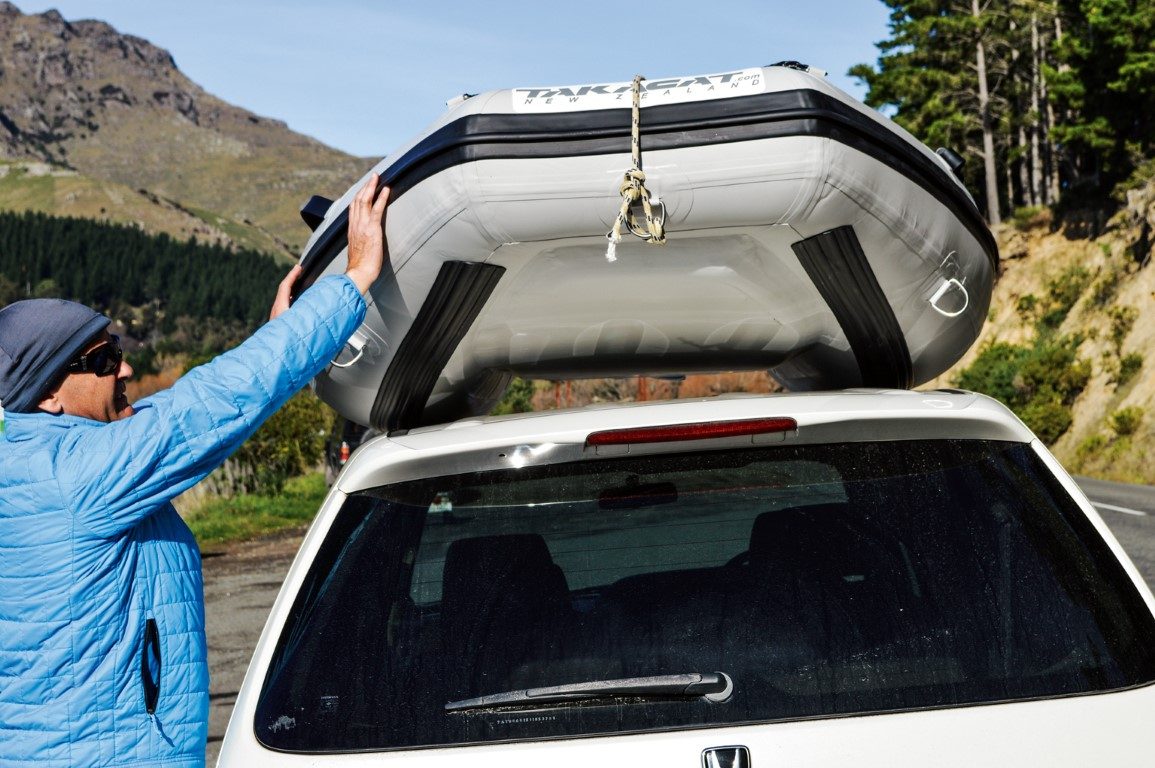
Fitting a 5hp Yamaha transformed the Takacat from workhorse into the fun machine that her Thundercat heritage suggests. She belted around the bay holding tight in the corners and riding high on her hulls which rode above the slap and bang of the spray zone. Her wake was typically catamaran minimal and I suspect she would be up to working through surf with no difficulties.
The only problem with letting a cat out of a bag is getting it back in. I was reluctant to pack the Takacat away and kept her inflated for four days as I went back to do more “testing.” I took this reluctance as a sure sign that the Takacat’s high performance, stability, tracking and load-carrying capability mean she is set to lead a new generation of inflatable tenders.
Takacat 260 Sport
Words by John Eichelsheim, Photos by Will Calver
Written
Bookmark post
Bookmarked
Bookmark post
Bookmarked

OVERALL RATING
We gave the
an OVERALL RATING of
PERFORMANCE
HANDLING
ECONOMY
SPECIFICATION
BUILD QUALITY
VALUE
MODEL DETAILS
BUILDER
Takacat
SPECS
LENGTH OVER ALL (M)
2.6
DISPLACEMENT (KG)
28
DETAILS
ENGINE
2-5hp outboard
CONSTRUCTION
Inflatable
CONSTRUCTION DETAILS
1000 denier PVC
Related Articles
Comments
This conversation is moderated by Boating New Zealand. Subscribe to view comments and join the conversation. Choose your plan →
This conversation is moderated by Boating New Zealand.








